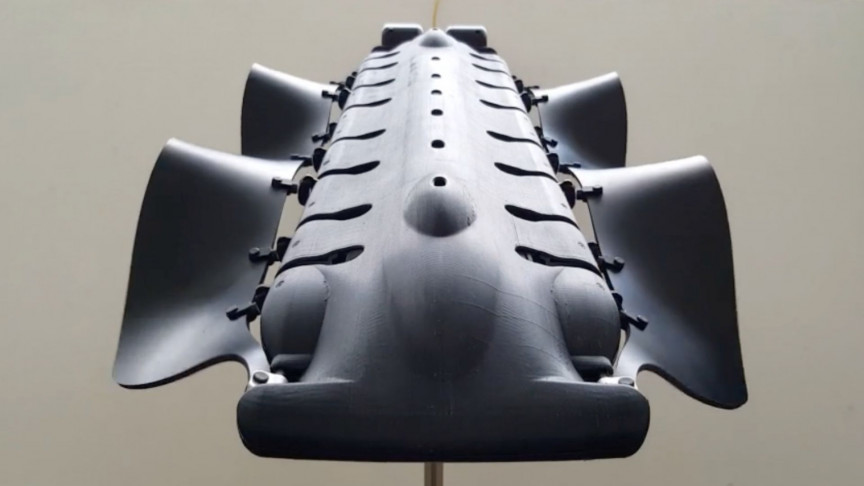New York-based firm Pliant Energy Systems is building a marine system reminiscent of the cuttlefish with its rippling underwater motion, a report from The Economist reveals.
The company’s biomimetic machine, called Velox, is based on the principle that propellers are nowhere near as efficient as the fins of sea creatures that are prevalent in nature.
Fins versus propellers
Unlike propellers, fins and flippers can extend around a sea creature, meaning more propulsion without the need for a large protruding propeller that could get caught or damaged by hitting the seabed. Fins are also flexible, meaning that if they do come in contact with any other object in the sea, they are less likely to get damaged.
In an interview with The Economist, an ex-marine biologist and founder of Pliant Energy Systems, Benjamin Pietro Filardo, explained how he is designing submersible machines that are propelled using flexible fin-like materials. He said Velox will produce approximately three times as much thrust per unit energy as the average propeller of a small boat. The system can travel underwater and even come out onto land, using its fins almost like robotic legs. The video below shows Velox skating on ice and swimming in a pool.
Cuttlefish-like propulsion could soon take to the seas
Filardo showed his new design to America’s Office of Naval Research, leading them to commission a new iteration, called C-Ray, that will be faster and lighter than Velox. C-Ray also won’t be tethered, unlike Velox, which is currently controlled via a cable. Autonomous swarms of the machine could eventually be used for missions such as undersea patrols, mine removal, and deepsea exploration and monitoring. In January, for example, scientists from Harvard University announced they were developing swarms of autonomous robot fish that could one day help to monitor the oceans. For naval operations, Velox’s undulating propulsion system will make less noise, meaning it will give the systems the advantage of being less easily detected.
Filardo said the system has great potential for scalability, giving the blue whale as an example of a massive sea mammal that uses fins for propulsion. Impressively, he also revealed that he is also working on a concept that would allow his system to moor itself, and then use the undulations of its fins, thanks to the sea current, to recharge. A lot of testing is still needed, but if Filardo’s system delivers on its promise, we might eventually see giant mechanical sea beasts silently gliding through the oceans.
Credit: Source link





















